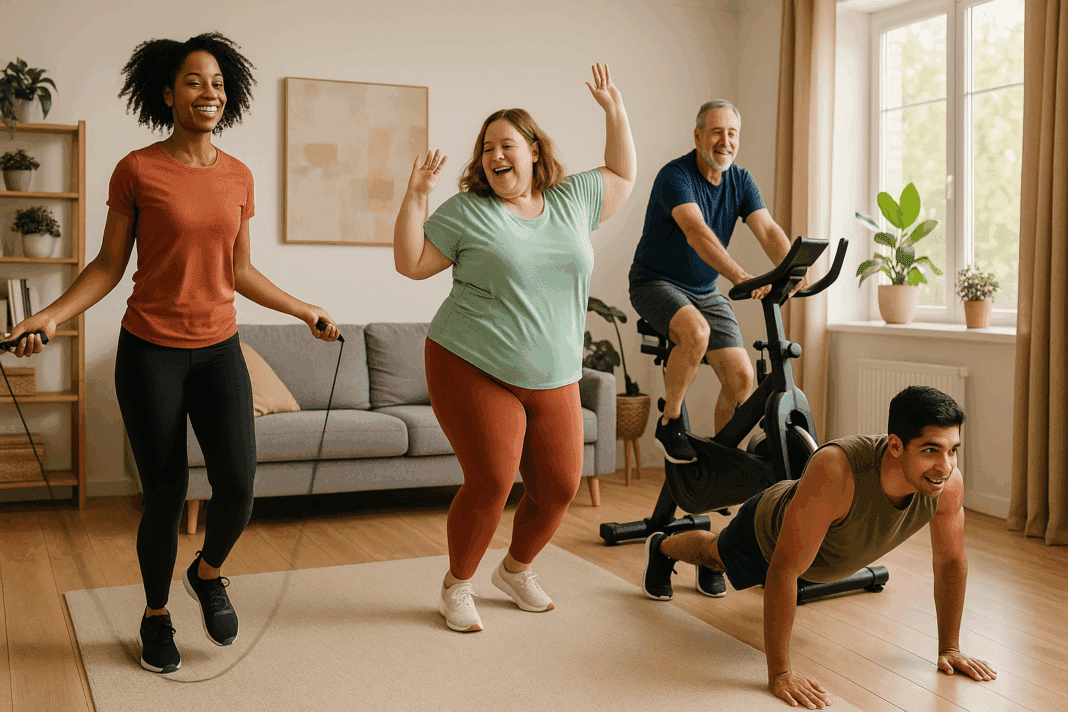Introduction: Rethinking Cardio for the Modern Home Athlete
In recent years, many fitness enthusiasts have been reimagining what it means to do cardiovascular exercise in a way that suits home-based routines, lifestyle constraints, and individual physical needs. With an increasing number of people seeking cardio workouts without running, the fitness industry has responded with a wealth of options that support cardiovascular health without requiring a treadmill or pounding the pavement. This shift isn’t just a matter of convenience; it reflects a broader awareness that running isn’t suitable or appealing for everyone. Whether due to joint concerns, space limitations, or personal preference, there is growing demand for aerobic exercise without running that still delivers measurable gains in stamina, endurance, and overall wellness.
You may also like: How to Increase Stamina and Endurance Naturally: Smart Training Tips and Nutrition Habits That Support Cardiovascular Fitness
It is also important to consider that the body benefits from variety. Runners often face overuse injuries that result from repetitive impact, while others may struggle with motivation due to the monotony of traditional cardio routines. Fortunately, there are many science-backed cardio alternatives to running at home that effectively elevate the heart rate, enhance lung capacity, and promote long-term cardiovascular resilience. These exercises not only offer a practical solution to indoor workouts but also provide sustainable, enjoyable movement that can be tailored to any fitness level.
By exploring the physiological foundations of cardio, identifying diverse exercise alternatives, and offering evidence-based strategies for progression, this article will serve as a comprehensive resource for those seeking cardio exercises without running. Whether you’re training for endurance, aiming to lose weight, or simply trying to maintain a healthy heart, these expert-approved methods can deliver powerful results—no treadmill required.
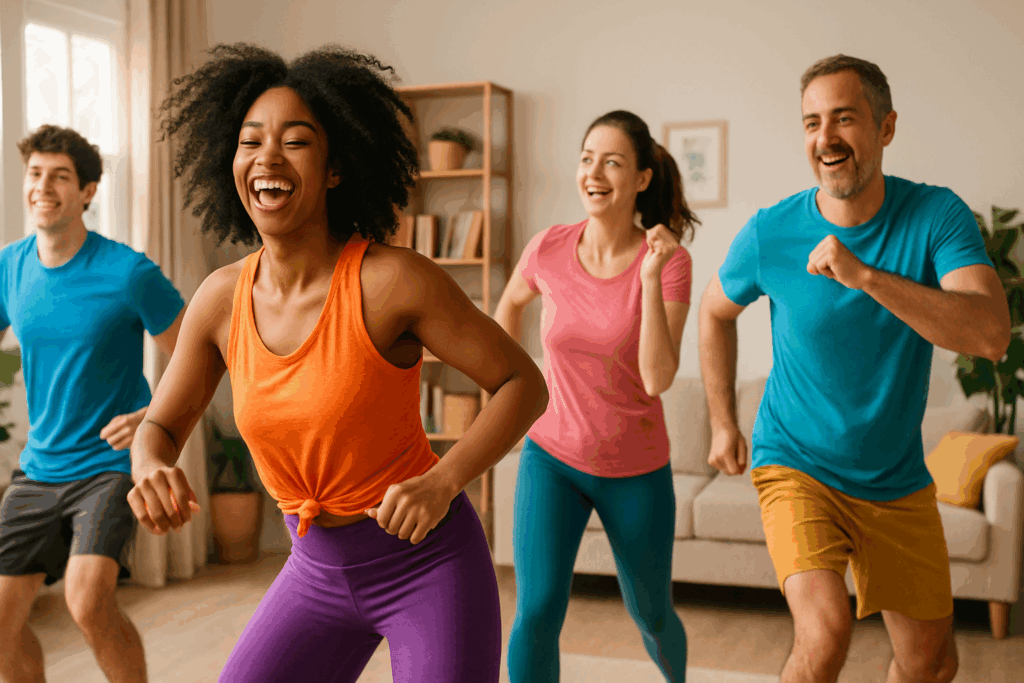
Understanding the Role of Cardiovascular Exercise in Endurance Training
Before diving into alternatives, it’s essential to understand why cardio matters in the first place. Cardiovascular exercise is any physical activity that raises your heart rate and breathing rate for an extended period, challenging your heart and lungs to supply oxygen-rich blood to your muscles more efficiently. Over time, consistent aerobic training strengthens the heart muscle, improves stroke volume (the amount of blood pumped per beat), and enhances VO2 max, a key marker of aerobic capacity.
For those pursuing endurance and stamina training, cardio serves as the bedrock of performance. Whether you’re a recreational hiker, amateur cyclist, or aspiring triathlete, cardiovascular fitness allows you to sustain effort over time without fatigue. The body becomes more efficient at using oxygen, clearing metabolic waste, and managing heat, all of which contribute to greater endurance.
Interestingly, aerobic benefits aren’t limited to traditional running. Research consistently shows that other forms of steady-state or interval-based training can elicit comparable adaptations in the cardiovascular system. When performed at the right intensity and duration, cardio exercises besides running can offer the same—or even superior—training benefits due to their lower impact, accessibility, and variety.
Therefore, those interested in cardio workouts besides running are not compromising results; they may actually be optimizing them. This reframing empowers individuals to choose exercises they enjoy, reducing burnout and supporting long-term adherence to fitness routines.
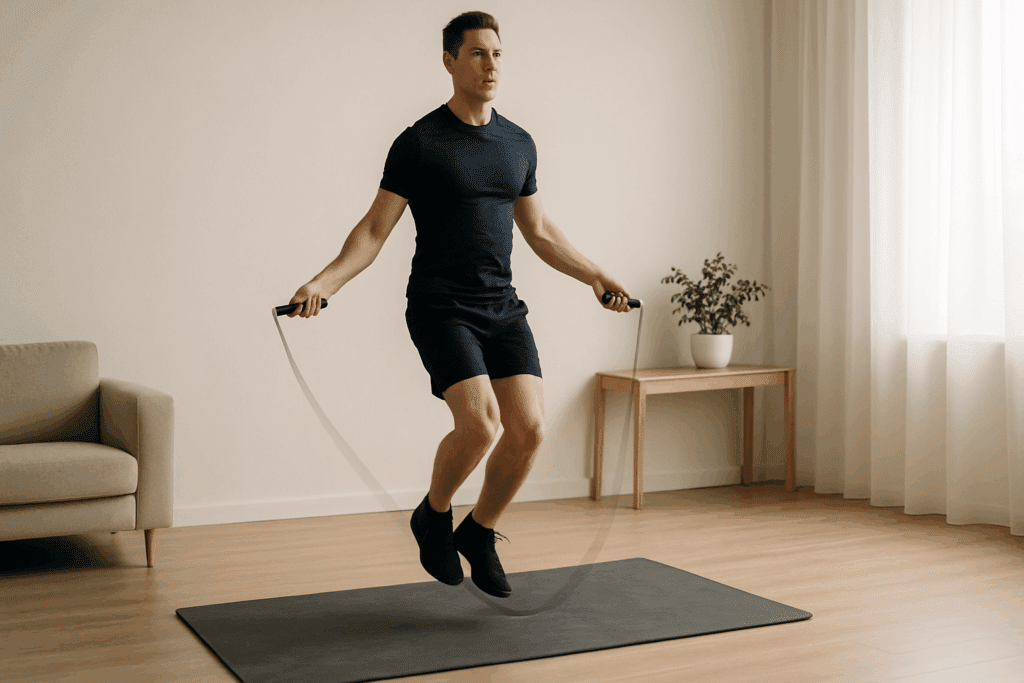
Why Running Isn’t the Only Answer
Running has long been considered the gold standard of cardio, thanks to its simplicity and effectiveness. But it’s not always ideal. For people with knee or ankle issues, the repetitive impact can lead to inflammation and chronic injury. For others, running simply isn’t motivating or practical—particularly when confined to small living spaces or unpredictable weather. These realities highlight the necessity of finding aerobic exercise without running that still supports cardiovascular development.
From a physiological standpoint, the body doesn’t distinguish between running and other forms of cardio when it comes to the cardiovascular stimulus. What matters most is the consistency, intensity, and duration of the workout. A vigorous cycling session, for example, can challenge the heart as effectively as a run, with the added benefit of reduced joint strain. Likewise, HIIT (high-intensity interval training) protocols using bodyweight or light resistance can raise heart rate and improve endurance without requiring outdoor movement.
Furthermore, modern health and fitness metrics have validated the use of heart rate zones, perceived exertion scales, and metabolic equivalents to measure effort across a wide range of activities. This scientific approach allows individuals to select from many cardio alternatives to running at home while ensuring they remain in the appropriate intensity range to meet specific goals.
Dance Fitness: Elevating Cardio Through Rhythm and Joy
One of the most engaging and accessible cardio exercises besides running is dance fitness. Whether through structured programs like Zumba, follow-along YouTube classes, or freestyle sessions set to your favorite playlist, dance offers a full-body aerobic workout that disguises effort with enjoyment. Research shows that dance-based cardio improves cardiovascular endurance, coordination, and cognitive flexibility, making it an ideal choice for those seeking both physical and mental benefits.
Dance workouts elevate heart rate by incorporating dynamic movement patterns that involve large muscle groups. As with running, sustained movement over 30 to 60 minutes in a moderate-to-high-intensity zone delivers significant improvements in aerobic capacity. The key difference lies in the variable intensity and multi-directional motion, which challenge the cardiovascular system while offering a lower risk of overuse injuries.
What sets dance fitness apart as an effective form of cardio without treadmill use is its adaptability. It requires no special equipment, can be performed in limited space, and allows for personal expression. This makes it especially appealing for individuals who find traditional workouts tedious or intimidating. Over time, regular dance sessions can significantly improve endurance while supporting joint mobility, posture, and even emotional resilience.
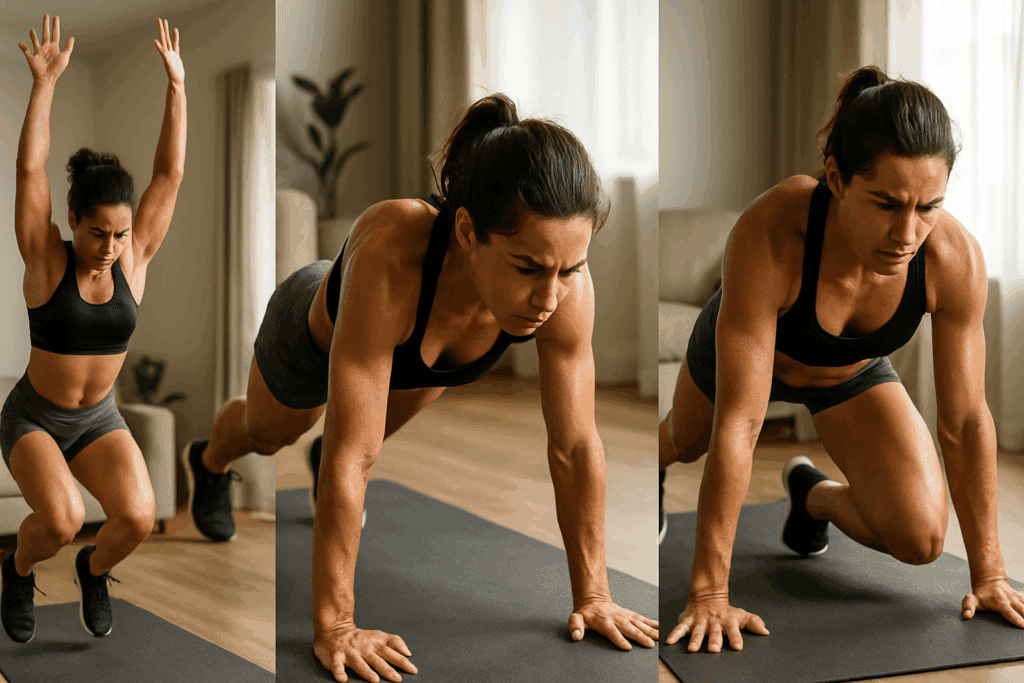
Jump Rope: Compact, Efficient, and Surprisingly Effective
Jump rope may seem like a playground activity, but it’s a powerhouse form of aerobic exercise without running. Just ten minutes of vigorous jump rope training can provide the same cardiovascular benefits as a 30-minute jog, making it a time-efficient alternative that fits neatly into busy schedules. Moreover, jump rope enhances coordination, agility, and muscular endurance—attributes essential to well-rounded performance.
What makes jump rope such an effective cardio workout without running is its ability to elevate the heart rate quickly and keep it elevated. The repetitive jumping motion activates both the upper and lower body, requiring synchronized effort from muscles, lungs, and the cardiovascular system. This leads to rapid improvements in aerobic capacity, balance, and rhythm.
To reduce the risk of shin splints or knee strain, it’s important to use proper form and begin with short intervals. Soft surfaces such as rubber mats can also help absorb impact. As proficiency builds, individuals can incorporate jump rope intervals into circuit training or perform longer continuous sessions for endurance development. The compact size of the rope makes it a perfect companion for at-home workouts or travel routines, solidifying its place among the best cardio alternatives to running at home.
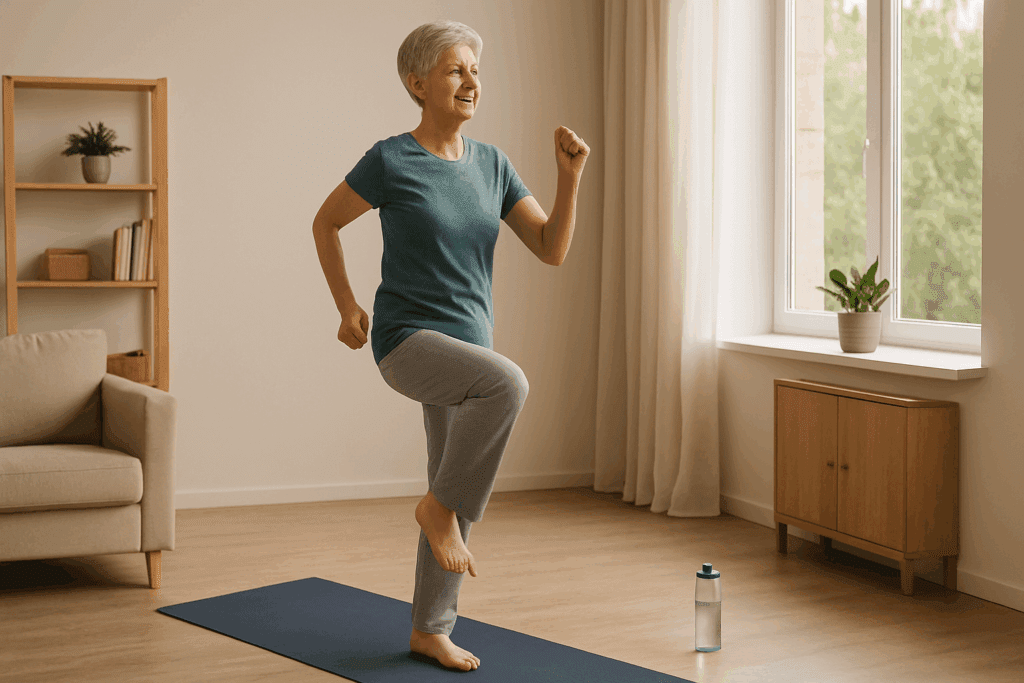
Bodyweight HIIT: High Intensity Without the Hassle
For those seeking a challenging cardiovascular workout in a short time frame, bodyweight high-intensity interval training (HIIT) offers a science-backed method to boost endurance without the need for running or machines. This style of training alternates periods of intense effort with brief recovery, creating a metabolic demand that elevates heart rate, increases VO2 max, and promotes fat oxidation.
Exercises like burpees, mountain climbers, jump squats, and plank jacks can be strung together in a circuit to provide a full-body cardio workout without running. These movements require minimal space and no equipment, making them ideal for home environments. Moreover, bodyweight HIIT offers the benefit of afterburn—a phenomenon known as excess post-exercise oxygen consumption (EPOC)—which extends calorie burn long after the workout ends.
In terms of safety and progression, HIIT can be tailored to suit different fitness levels. Beginners might start with shorter intervals and longer rest periods, while advanced users can increase intensity and reduce rest. This scalability ensures that anyone can reap the benefits of aerobic training while avoiding the strain of running. Importantly, this method underscores that cardio exercises without running can be not only effective but also highly efficient.
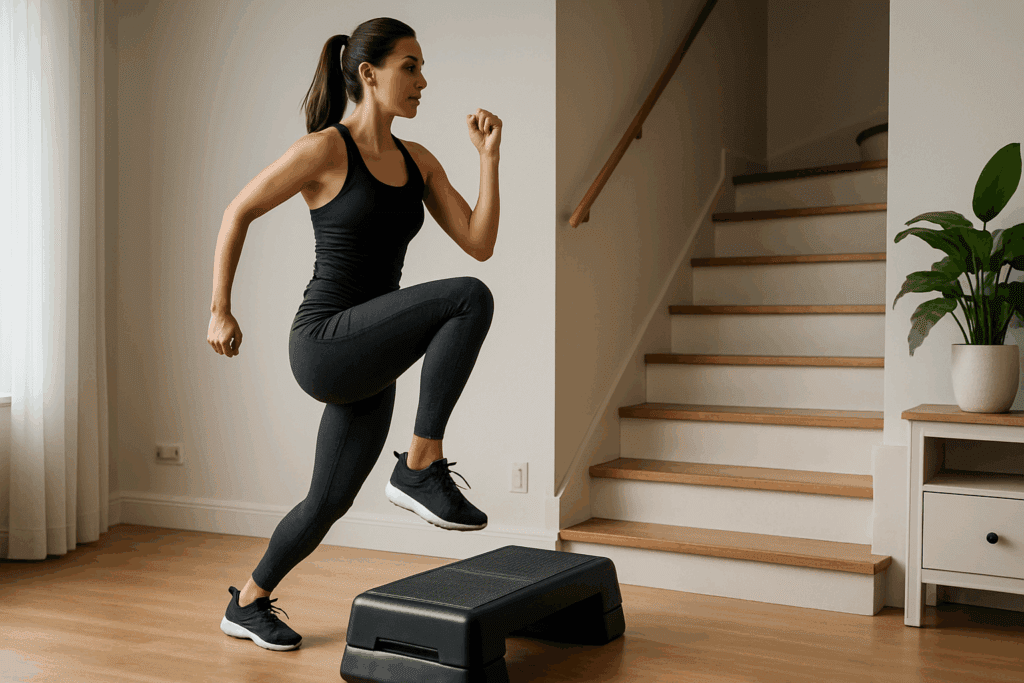
Low-Impact Steady-State Workouts: Sustained Movement Without Joint Stress
Steady-state cardio remains a cornerstone of endurance training, and low-impact modalities like brisk walking, marching in place, or shadowboxing provide an excellent way to maintain cardiovascular fitness without the jarring impact of running. These activities are particularly useful for beginners, older adults, or individuals recovering from injury.
Cardio without treadmill access can still achieve steady-state intensity by maintaining a continuous pace for 30 to 60 minutes. Marching in place with arm movements, low-impact aerobics, or light step routines can keep the heart rate in the target aerobic zone, supporting endurance without overtaxing the joints. Over time, these workouts improve the heart’s efficiency, reduce blood pressure, and enhance metabolic health.
One underrated benefit of low-impact cardio workouts besides running is their sustainability. These routines can be performed more frequently with less recovery time, allowing for consistent cardiovascular conditioning. They also reduce the risk of burnout, making them ideal for long-term integration into a fitness lifestyle.
Stair Climbing and Step Training: Vertical Gains Without Leaving Home
When space and time are limited, stair climbing and step workouts offer an exceptional way to engage in cardio workouts without running. Climbing stairs is a naturally intense activity that works the major muscles of the lower body while quickly elevating heart rate. It also mimics the incline training commonly used in athletic preparation, making it a valuable tool for enhancing stamina.
Step training, which involves using a sturdy platform to perform aerobic routines, brings structure and variety to vertical movement. These sessions often include coordinated sequences that target multiple planes of motion while maintaining cardiovascular intensity. As with other modalities, step workouts can be adapted to different fitness levels, allowing for progressions in speed, height, and duration.
Incorporating stair or step routines several times a week can significantly improve lower body strength and aerobic capacity. It also offers a practical solution for cardio without treadmill equipment, using only household features or basic props. For those who enjoy structured choreography, step workouts can add an engaging element to home fitness that makes endurance training more enjoyable.
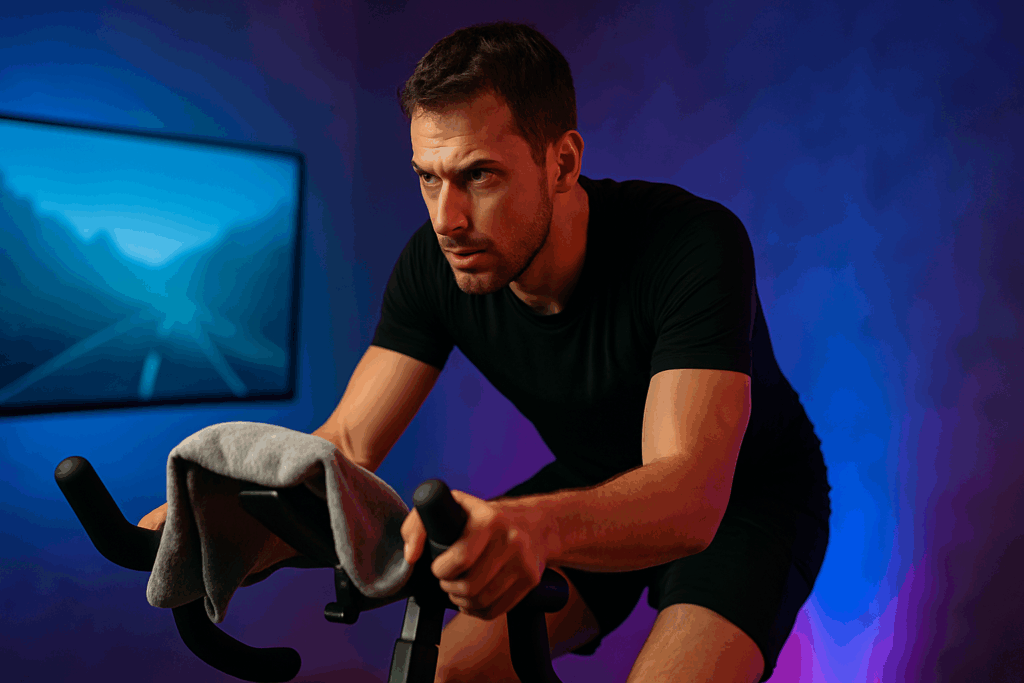
Cycling Indoors: Pedal Power for Cardiovascular Performance
Indoor cycling is a classic example of how cardio exercises without running can deliver top-tier endurance benefits. Whether using a stationary bike or a portable pedal trainer, cycling builds cardiovascular strength while being gentle on the joints. It also allows for precise control over resistance and cadence, enabling targeted heart rate zone training.
What sets indoor cycling apart is its ability to support both steady-state and interval-based protocols. Riders can perform long, rhythmic sessions to build aerobic base or incorporate sprints to develop anaerobic capacity. Cycling also activates key muscle groups in the legs, hips, and core, promoting muscular endurance alongside cardiovascular improvement.
For those looking to improve their aerobic exercise without running, cycling offers a safe and adaptable solution. Virtual spin classes, scenic ride simulations, and customizable playlists enhance the experience, making it easier to stay engaged. Over time, consistent cycling helps reduce resting heart rate, increase lung capacity, and support fat metabolism—cornerstones of endurance and performance enhancement.
Frequently Asked Questions: Cardio Alternatives to Running at Home
1. Can cardio workouts without running be as effective as traditional running for building stamina?
Absolutely. Cardio workouts without running can be just as effective for building stamina, depending on how they’re structured. Activities such as high-intensity interval training (HIIT), step workouts, or jump rope can elevate the heart rate to similar or even higher levels than steady-state running. The key lies in achieving and sustaining the appropriate intensity over time. When aerobic exercise without running is performed consistently and progressively, it can enhance cardiovascular function, oxygen uptake, and muscular endurance in much the same way running does. In fact, many athletes cross-train using cardio alternatives to running at home to reduce injury risk and increase overall fitness versatility.
2. What are some unique advantages of choosing cardio exercises without running?
Choosing cardio exercises without running offers multiple benefits beyond joint protection. For one, it introduces variety, which can help prevent mental fatigue and increase motivation. Activities like dance fitness or bodyweight circuits offer creative movement patterns that engage different muscle groups, improving functional strength alongside aerobic conditioning. Additionally, cardio workouts besides running are often easier to adapt to small spaces and don’t require expensive equipment. For individuals recovering from lower-limb injuries or managing chronic joint pain, these low-impact alternatives can provide an accessible path to maintaining cardiovascular health without risking further injury.
3. How can I stay motivated to do cardio without a treadmill or running?
Staying motivated for cardio without treadmill equipment or outdoor runs involves leveraging variety and personal enjoyment. Many people find motivation through music-based routines like dance fitness or rhythm cycling, which tap into intrinsic reward systems. Creating structured but flexible workout plans—like a rotating schedule of HIIT, stair climbing, and low-impact aerobic routines—can maintain novelty while supporting measurable progress. You might also consider using wearable fitness trackers to monitor heart rate zones or set weekly movement goals. Ultimately, exploring diverse cardio exercises besides running can reignite your enthusiasm for fitness by allowing you to discover what your body enjoys most.
4. Are there long-term benefits to doing aerobic exercise without running?
Yes, there are substantial long-term benefits associated with aerobic exercise without running. Over time, regular engagement in low-impact cardio activities can reduce systemic inflammation, improve metabolic efficiency, and support cognitive function—all without the repetitive joint strain that sometimes accompanies high-volume running. Additionally, individuals who sustain aerobic activity through non-running modalities often report greater workout consistency, which is a critical predictor of long-term health outcomes. Whether through step aerobics, rowing, or circuit-style bodyweight training, these cardio alternatives to running at home promote lifelong cardiovascular resilience and functional movement capacity.
5. How do I know if I’m getting a good cardio workout without running?
You can gauge the effectiveness of cardio exercises without running by monitoring your perceived exertion and heart rate response. A moderate to vigorous effort should leave you slightly breathless but still able to speak a full sentence, while more intense intervals might limit you to a few words. Fitness apps and smartwatches can help you track heart rate zones, providing objective data on aerobic intensity. Recovery markers—like how quickly your heart rate returns to normal post-workout—also indicate cardiovascular adaptation. With consistent cardio workouts besides running, you should notice improvements in energy levels, stamina, and recovery over time.
6. What are some innovative trends in cardio workouts besides running?
The world of cardio exercises besides running continues to evolve with new technology and programming strategies. Virtual fitness platforms now offer immersive environments for indoor cycling, rowing, and even boxing, simulating real-world scenarios to enhance engagement. Functional HIIT training using compound body movements is gaining popularity for its ability to deliver cardio benefits alongside strength gains. Additionally, wearable technology that offers personalized training zones is making it easier to fine-tune aerobic workouts without running. These innovations allow for a more customized and effective training experience, especially for those who prefer cardio alternatives to running at home.
7. Can older adults benefit from cardio workouts without running?
Older adults can absolutely benefit from engaging in cardio without treadmill workouts or running routines. In fact, low-impact cardio activities such as seated aerobics, gentle dance classes, or aquatic movements are particularly suited for aging populations. These activities support cardiovascular health, maintain muscular coordination, and promote balance—all while minimizing stress on the joints. For older adults with mobility limitations, chair-based cardio routines provide a safe yet effective aerobic stimulus. Embracing cardio exercises without running enables older individuals to preserve independence and quality of life while avoiding injury.
8. How do cardio alternatives to running at home affect mental health?
Cardio alternatives to running at home can have a profound impact on mental health, particularly when they incorporate movement diversity, music, or community elements. Activities like dance fitness, interactive online classes, or even shadowboxing can help release endorphins, reduce anxiety, and combat depressive symptoms. The psychological benefits of aerobic exercise without running often stem from the autonomy and enjoyment these activities offer. Unlike the sometimes monotonous nature of treadmill running, home-based cardio options can be tailored to reflect personal interests and energy levels. By reducing stress and improving sleep quality, these workouts also contribute to more balanced emotional wellbeing.
9. Are there risks involved with performing cardio without treadmill equipment or running shoes?
While many cardio alternatives to running at home are lower impact, they are not without their risks. Poor form, inadequate warm-ups, or overtraining can lead to strains, particularly in high-repetition activities like jump rope or plyometric circuits. To mitigate these risks, it’s important to gradually increase workout intensity and duration while paying close attention to body mechanics. Choosing supportive footwear and cushioned surfaces can also help, especially for exercises involving repetitive jumping or rapid changes in direction. Just like with any training modality, cardio workouts without running should be approached mindfully and adjusted based on individual capacity and recovery.
10. How can I progress my aerobic fitness if I never want to run?
Progressing in aerobic fitness without running is entirely feasible and often more enjoyable for those who value diversity in their routines. You can increase the duration or intensity of your chosen cardio exercises besides running by shortening rest intervals, adding resistance, or experimenting with elevation (such as using stairs or incline steps). Another approach involves varying training formats, such as alternating steady-state sessions with interval bursts. Tracking improvements in heart rate recovery, distance covered, or perceived exertion can help quantify progress. Ultimately, cardio workouts without running offer an adaptable, lifelong path to aerobic improvement that respects your preferences, physical needs, and lifestyle.
Conclusion: Building Endurance Without the Miles
The idea that cardiovascular fitness is inextricably tied to running is a myth that modern exercise science continues to dispel. As we’ve seen throughout this exploration of cardio alternatives to running at home, there are numerous evidence-based, engaging, and highly effective ways to train the cardiovascular system without stepping on a treadmill or lacing up your running shoes. From dance fitness and jump rope to HIIT and cycling, each modality provides a unique pathway toward improved endurance, stamina, and overall health.
Cardio workouts without running offer more than just convenience. They provide inclusivity, allowing people with injuries, time constraints, or preference-driven limitations to engage in meaningful aerobic training. These alternatives are grounded in physiological principles that prioritize heart rate elevation, muscular engagement, and oxygen delivery, ensuring that the benefits of aerobic exercise without running are both measurable and sustainable.
Ultimately, the key to success in any endurance or performance-enhancement program is consistency, enjoyment, and progression. By embracing cardio exercises besides running, individuals unlock a diverse toolkit for lifelong health and fitness. These expert-approved methods allow for greater personalization, lower injury risk, and enhanced motivation—proving that when it comes to building stamina, the road taken matters far less than the effort you bring to the journey.
Was this article helpful? Don’t let it stop with you. Share it right now with someone who needs to see it—whether it’s a friend, a colleague, or your whole network. And if staying ahead on this topic matters to you, subscribe to this publication for the most up-to-date information. You’ll get the latest insights delivered straight to you—no searching, no missing out.
Further Reading:
20 cardio exercises to do at home with minimal equipment, from beginner to advanced

